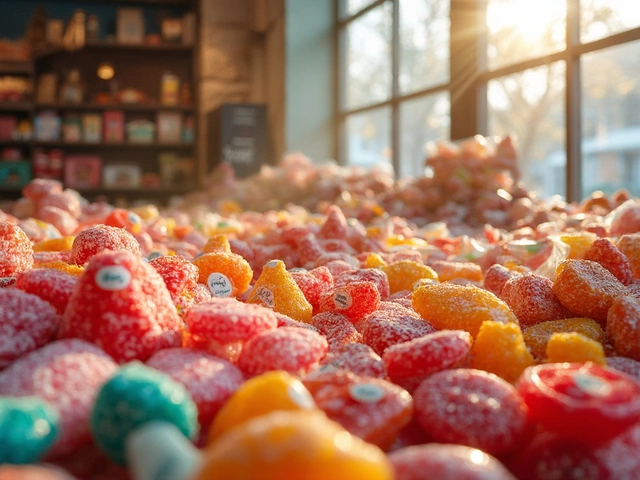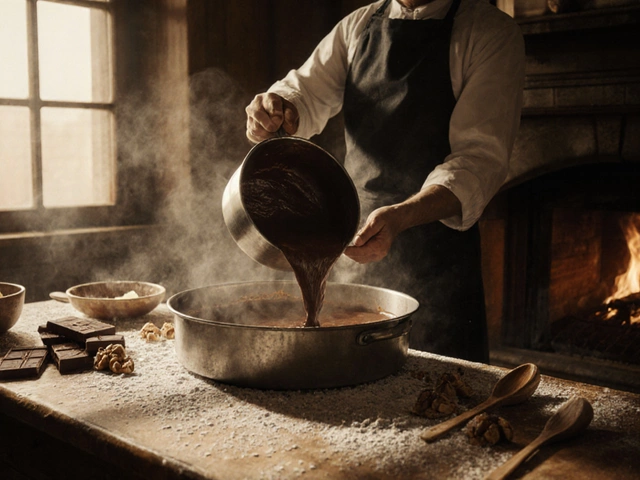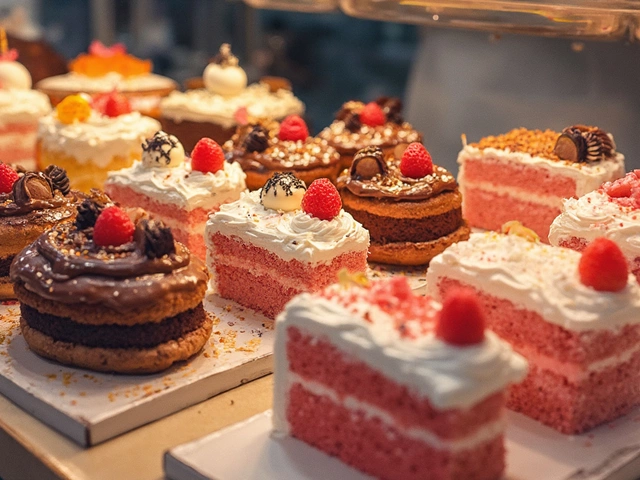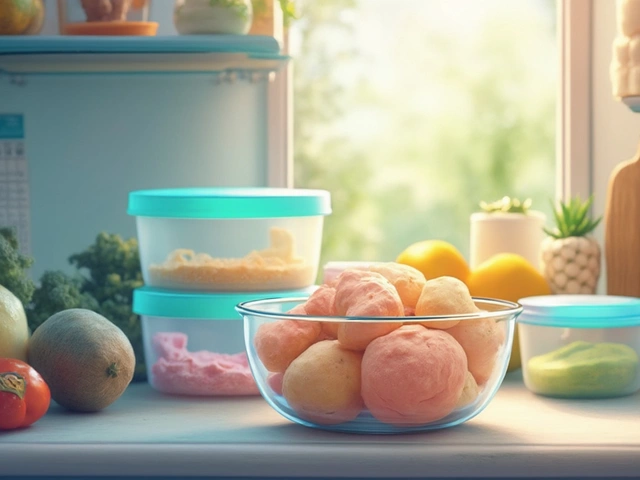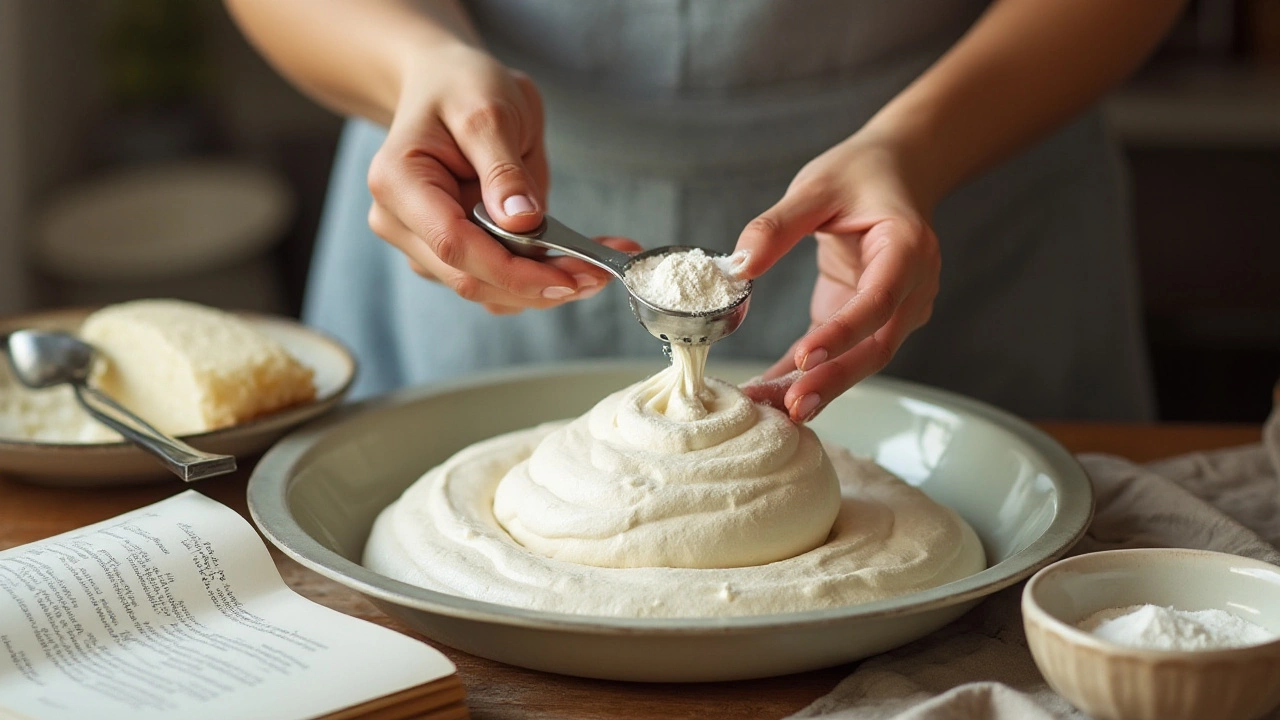
Pavlova, a delightful concoction of a crisp shell and marshmallow-soft interior, often graces our tables as a celebratory dessert. The quest for the perfect pavlova leads many bakers to wonder about the role of cornflour in its creation.
At first glance, cornflour might seem like a humble, even negligible, component of the recipe. However, its presence is more crucial than you might expect. Delving into the science and art of baking, cornflour acts as a stabilizing agent, ensuring the meringue maintains its angelic grace upon baking.
This article reveals how cornflour affects the texture and structure of pavlova, offering insights and tips from experienced bakers on achieving that perfect balance of crunch and cloud-like softness. Whether you're a seasoned baker or a newbie eager to perfect your pavlova, understanding the role of cornflour is key to mastering this elegant dessert.
- The Role of Cornflour in Baking
- Cornflour's Influence on Pavlova
- Comparing Cornflour and Cornstarch
- Pavlova Texture and Stability
- Tips for Using Cornflour in Pavlova
- Common Pavlova Mistakes
The Role of Cornflour in Baking
Cornflour, also known as cornstarch in some parts of the world, is a key ingredient in many baking recipes, yet its humble nature often leads it to hide in the shadows of more prominent ingredients like sugar or flour. Despite its understated presence, cornflour plays a critical role in transforming the texture and consistency of a variety of baked goods, including the delectable pavlova recipe. It primarily acts as a thickening agent, which is why it is commonly used in sauces and gravies. But in the world of baking, its functions expand further. Cornflour aids in the absorption of moisture, which is why it helps to maintain the crisp exterior and soft interior of meringues by controlling the liquid seepage within the structure.
In the realm of pastries and cakes, cornflour is often combined with all-purpose flour to create lighter textures and add tenderness to the crumb. This is particularly evident in sponge cakes, where the incorporation of cornflour results in an airier bake. Moreover, cornflour is gluten-free, which makes it an ideal addition or substitute in gluten-free baking, offering a similar mouthfeel without the use of wheat. In the case of meringues and pavlova, its role is even more specific—cornflour in pavlova acts as a binding agent, ensuring the stability of egg whites and preventing them from weeping or collapsing during baking. This crucial contribution of cornflour gives the pavlova its characteristic marshmallow-like center beneath that signature crisp shell.
According to renowned baker Mary Berry, "Cornflour is essential in a pavlova to achieve the right balance of crispness on the outside while maintaining that soft, chewy center."
Moreover, when the meringue is baked, cornflour helps in maintaining the integrity of its smooth texture by binding moisture and proteins efficiently. This not only preserves the visual appeal of the dessert but also enhances its flavor by avoiding any potential sogginess. In terms of chemistry, when mixed with sugar, the starch granules swell and create a gelatinous consistency on heating, providing structural support that holds the meringue together, even when baked at lower temperatures. Interestingly, this ability of cornflour to form a gel-like structure is widely used in many other desserts beyond pavlovas, including custards and sauces.
Given its versatile properties, cornflour's influence extends beyond stability. It also contributes to a finer texture in baked goods due to its finer particle size compared to regular wheat flour. This allows it to mix more evenly and avoid common baking woes like lumps. In recipes that require coatings or breading, cornflour serves to enhance crispness, a quality that's highly prized in everything from cookies to crispy fried batter. Its effectiveness in these roles explains why cornflour is a staple in many culinary traditions worldwide. Thus, when following a pavlova recipe, the addition of cornflour is not merely an optional step—it's a necessary component that ensures the dessert reaches its full potential, blending taste, texture, and visual appeal flawlessly.
Cornflour's Influence on Pavlova
In the realm of baking, crafting the perfect pavlova recipe hinges on the delicate equilibrium between ingredients that ensures a sublime texture. Among these components, cornflour holds a pivotal role, quite like a secret sorcerer in the kitchen. To many bakers, cornflour might seem like an understated ingredient, lounging quietly in recipes between the more dramatic acts of eggs and sugar. Yet, its function is immensely impactful on the formation of that classic pavlova charisma we adore.
Cornflour, also known as cornstarch in some regions, serves as a stabilizing agent for the meringue mixture. The primary role of cornflour in a pavlova is to prevent the weeping or leaking that can sometimes occur as a pavlova cools. This undesirable moisture can mar the dessert's signature crisp exterior and tender heart. By binding with liquid, cornflour helps maintain the crispness and forms a stabilizing layer, almost a web, within the structure of the meringue. This is essential to ensure the pavlova stands proudly, with its edges slightly cracked but not crumpled into sogginess. This characteristic is why seasoned bakers insist on including it for a cornflour in pavlova.
Moreover, the addition of cornflour influences the texture, adding a subtle creaminess that softens the marshmallow-like interior, contrasting the crunchy outer shell. The addition is typically small, generally just a teaspoon, but it defines the textural integrity of the baked result. Cornflour's role is akin to a maestro ensuring every note is hit perfectly within an orchestra of flavours and textures. The interplay of air and heat transforms this simple ingredient into an essential catalyst for the beloved pavlova experience passed down through generations.
Some experts argue that the use of cornflour is akin to adding insurance to your baking. Michael Hermes, a renowned pastry chef, once said,
"If you want to avoid the heartbreak of a collapsed pavlova, never forget your pinch of cornflour; it could mean the difference between a masterpiece and a mere puddle."For those experimenting with their own pavlova variations, understanding the interaction between cornstarch and egg whites will undoubtedly lead to more consistently successful outcomes, enabling the dessert to retain its proud height from the moment it exits the oven to the spotless dessert plate after a feast.
Additionally, there is an ongoing debate among culinary aficionados about the interchangeability of cornflour and flour or similar starches. While some recipes recommend substituting other types of starch if cornflour is unavailable, these alternatives often lack the precision of reaction that cornflour provides in maintaining both the structure and elusively light texture. This subtle yet undeniable edge keeps cornflour as a cherished ingredient enshrined in the pavlova tradition, ensuring each bite remains satisfyingly consistent, table after table.
For those who approach baking as both an art and a science, understanding the influence of cornflour on pavlova opens up avenues for experimentation and refinement. It invites each baker to delve deeper into their craft, to play with flavor profiles, and texture balances. It encourages them to embrace the joy of creation, secure in the knowledge that their pavlova will hold, and hold beautifully. Thus, the humble cornflour becomes a testament to the integral role of precision and care in crafting culinary joy.
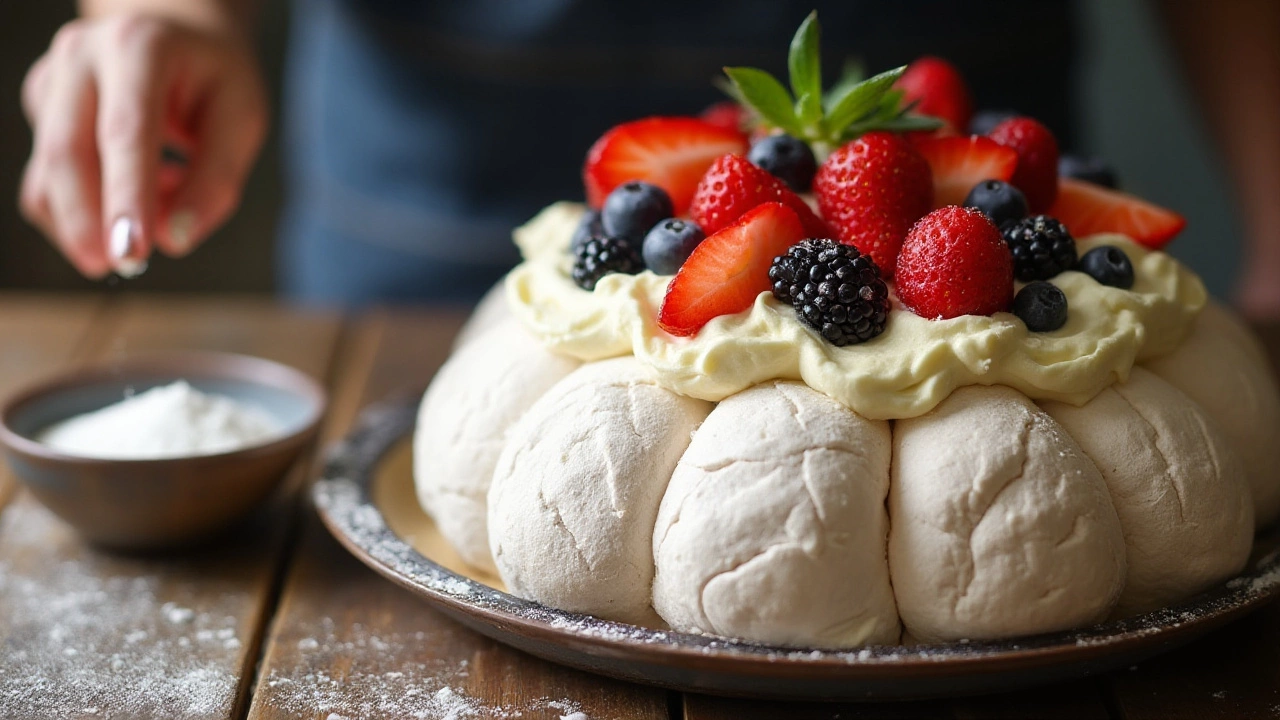
Comparing Cornflour and Cornstarch
When it comes to baking a perfect pavlova, the choice between cornflour and cornstarch often raises eyebrows among home bakers and professionals alike. Although these two ingredients might seem interchangeable due to their appearance and similar uses, the differences between them can significantly affect the outcome of your culinary creation. Let's delve into what sets these two apart and how each can impact the texture and stability of your pavlova.
In various regions, the terms cornflour and cornstarch are used interchangeably, which adds a layer of confusion. In the UK and Australia, cornflour typically refers to what many Americans call cornstarch. Cornflour as defined in the US and in other parts of the world is a finely ground white powder made purely from the starchy part of maize. On the other hand, cornmeal or corn flour in the US usually refers to the whole kernel ground into a fine powder. This subtle distinction is critical because cornflour and cornstarch's properties differ due to these compositional differences.
Cornstarch is often preferred in pavlova recipes because it acts as a stabilizing agent that prevents the meringue structure from collapsing. By binding moisture, cornstarch helps create a strong network within the egg whites, giving pavlova its signature crispness on the outside and soft, marshmallow-like texture inside. Without the use of cornstarch or cornflour, bakers risk ending up with a weeping pavlova—a meringue dessert that's sticky, dense, and far from the airy delight one expects.
Interestingly, an anecdote shared by a cooking legend, Mary Berry, describes her experiments with these ingredients: "While both serve similar purposes, I found that using cornstarch in particular provided my pavlova with a much-needed structure, especially on humid days." This insight highlights the importance of selecting the right thickener depending on the desired consistency and external factors like weather. As humidity increases, meringues tend to absorb more moisture from the air, which can make them unstable, so this small swap can indeed make a big difference.
To guide you further in baking, consider how each ingredient behaves when heated. Cornstarch has a unique ability to thicken at a lower temperature and remains clear and translucent when cooked, which is ideal for making the most visually appealing desserts. Moreover, the lack of protein and fiber in cornstarch compared to traditional cornflour means that it won't interfere with the meringue's delicate nature, allowing for the airiest and fluffiest texture possible, which is what makes pavlovas so irresistible.
Here's a simple table highlighting the key differences:
| Property | Cornflour (UK/Australia) | Cornstarch |
|---|---|---|
| Source | Endosperm of corn | Endosperm of corn |
| Texture | Smooth, but might feel grainier than cornstarch | Silky, fine powder |
| Usage in Baking | Thickener, more in sauces and gravies | Thickener for meringues and delicate desserts |
| Clarity in Dishes | Opaque | Translucent |
By understanding these differences, bakers can make informed choices on whether to incorporate cornflour or cornstarch in their pavlova recipes, ensuring a dessert that not only holds together gracefully but also enchants with its lightness and flavor.
Pavlova Texture and Stability
Creating the perfect pavlova requires a delicate balance of ingredients and technique, where texture and stability take center stage. The irresistibly soft, marshmallow-like interior juxtaposed against its crisp, meringue crust is what defines this delectable dessert. A key player in achieving this textural distinction is indeed the inclusion of cornflour. Acting as a starch, it’s the secret to inhibiting the egg proteins from toughening and stretching too far. This ensures the interior retains its soft, luscious feel, creating bite after entrancing bite that features a remarkable interplay of textures.
Cornflour's influence extends beyond mere texture. It also contributes significantly to the structural integrity of the meringue. Without an adequate stabilizing agent, pavlova could fall flat or collapse, a common pitfall for many home bakers. Cornflour acts as a binding component, entrapping moisture and aiding in the retention of air during the whipping process. As these minute bubbles form and expand within the meringue, they become less prone to deflation when baked. This results in a beautifully risen pavlova with just the right level of chewiness inside.
To further enhance your pavlova's texture and stability, consider the environmental factors in your kitchen. Too much humidity can pose a threat to meringue, causing it to weep or become overly sticky. Thus, it's vital to bake your pavlova on a dry day if possible. Remember to allow the pavlova to cool slowly in the oven after baking; this ensures it sets correctly and retains its structure.
“The true signature of a pavlova lies in its irresistibly light texture, a feat of culinary engineering where cornflour is the unsung hero,” notes Mary Berry, renowned baker.
For an interesting insight, here’s a simple guideline: use about one teaspoon of cornflour per four egg whites. This rationing strikes a balance, fortifying the meringue without altering its flavor. Another useful technique involves incorporating a little vinegar or lemon juice, which strengthens the foam and imbues a slight tang to complement the sweet meringue. These acidic ingredients work synergistically with cornflour to increase the strength of the protein bonds. Thus, you not only achieve superior texture, but also enhance the flavor profile of your pavlova.
Understanding the chemistry behind pavlova is just the start. Experimentation can also lead to personal adaptations and improvements. Don’t shy away from exploring different flavors or presentation techniques. But always remember, the heart of a successful pavlova lies in its texture and stability. With knowledge of the pivotal role cornflour plays, you can turn this classic dessert into a mesmerizing centerpiece that never fails to impress. Whether you are a seasoned chef or a novice in the kitchen, understanding these elements is your ticket to mastering the elusive art of pavlova making.
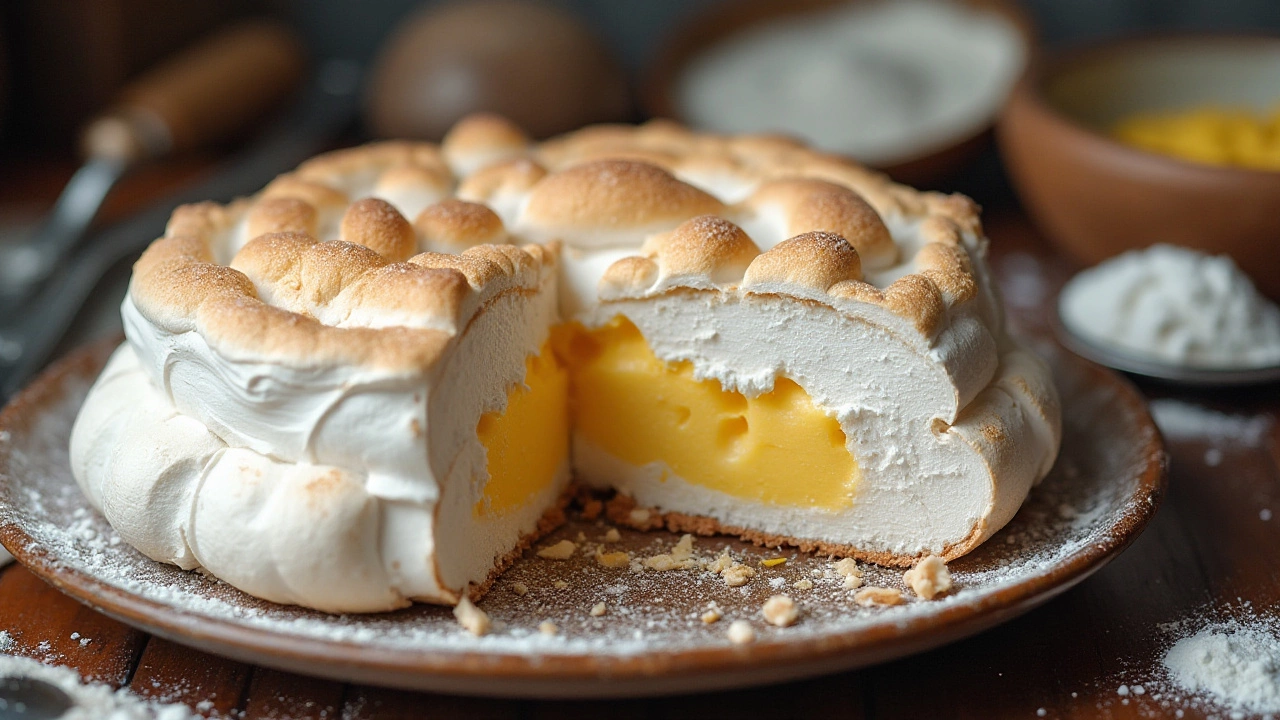
Tips for Using Cornflour in Pavlova
Incorporating cornflour into your pavlova might seem intricate, but these simple tips will ensure that your dessert dazzles. First and foremost, always sift your cornflour before adding it to the egg whites. Sifting removes lumps, allowing the cornflour to blend seamlessly with the sugar and egg whites, preventing any stodgy patches from forming in the cooked meringue. This step is crucial, as the smallest lump can throw off the delicate balance of our creation.
Cornflour is introduced at the stage where the egg whites have reached a soft peak. With the mixer on a low speed, you gradually sprinkle the cornflour into the shiny, thick meringue. This gentle incorporation ensures uniform distribution, enhancing the structural integrity of your pavlova without deflating the airy mixture. A sprinkle of cornflour, along with vinegar or lemon juice, acts marvelously as a stabilizing agent, lending your meringue that coveted marshmallow-like center while maintaining the exterior crispness.
The accuracy of your measurements matters immensely. Baking is a science, and such precision is often what separates a successful pavlova from a lackluster one. Use a kitchen scale to achieve this precision and look for the finest quality cornflour available. Cheaper brands may contain less pure starch, which might introduce varying results in texture. For those who may be curious about substitutes, while cornstarch is often suggested as an alternative, it differs slightly in its molecular makeup and absorption rate. Cornflour, especially in the UK, tends to perform more reliably.
Being aware of the humidity in your kitchen can also play a critical role. Pavlovas are inherently sensitive to moisture in the air. On cozy, wet days, be cautious as excess humidity can sabotage the stabilizing effects of your cornflour, leading to a chewy rather than crunchy outer layer. Consider using a dehumidifier or waiting for a less humid day for pavlova endeavors if you consistently encounter this issue.
"The seemingly minor addition of cornflour can be the difference between a mediocre and a magnificent pavlova," says renowned baker Mary Berry.Proper baking and cooling methods further amplify the benefits of cornflour. Bake your meringue low and slow, letting it cool in the oven for several hours or overnight to maintain its form while preventing cracks. The extended cooling process helps solidify the structure provided by the cornflour, resulting in a pavlova that is crisp on the outside yet tender and pillowy within.
There are a plethora of creative flavors and toppings you can experiment with once you've mastered the basic pavlova technique. The role of cornflour remains constant, providing a reliable base upon which you can add your personal touch. From fresh fruits to decadent chocolate shavings, the stability from cornflour ensures that whatever adornments you choose will be supported without collapsing the meringue beneath. Remember that the nuances of a great pavlova often lie within these delicate processes. By respecting the role of cornflour, you set the stage for a dessert that's as enjoyable to make as it is to eat.
Common Pavlova Mistakes
Creating a flawless pavlova can be an elusive pursuit, often fraught with minor missteps that lead to less-than-perfect results. Understanding the common mistakes made during the preparation and baking process can help you avoid them and achieve that ideal pavlova. One prevalent error is whipping the egg whites either too little or too much. Egg whites need to be beaten to stiff peaks just right, allowing them to hold their shape but not becoming overly dry. When under-whipped, the meringue won't be able to build enough structure, resulting in pavlovas that could flatten. Beat them too much, and they lose their elasticity, which can cause splitting or a grainy texture in the finished product.
"The key is to make sure your whites are just firm enough to form peaks but still glossy," advises Mary Berry, a legend in the world of baking.
Another frequent issue is the incorporation of sugar. Adding sugar too quickly can prevent it from dissolving correctly, leading to weeping meringues. To avoid this, gradually add the sugar one tablespoon at a time, beating well after each addition until it becomes completely absorbed, resulting in that signature glossy finish. Addressing this detail ensures a pavlova with the right sweetness and texture. Not enough or uneven oven temperatures pose another significant challenge. Pavlovas need to be baked low and slow to develop their crisp exterior while maintaining a soft interior. Ensure your oven is preheated and calibrated correctly. Sometimes, opening the oven door too frequently during baking can cause the meringue to collapse.
Humidity also plays a substantial role in how the pavlova turns out. Excess moisture in the air can be absorbed by the meringue, making it sticky and chewy. Knowing your environment and adjusting cooking times or conditions can safeguard against this. Consider baking pavlova on drier days or in a kitchen with a dehumidifier. Using fresh ingredients goes without saying, but ignoring this can be detrimental; stale or old egg whites won't hold air as well, impacting the lift and structural integrity. Make sure that your utensils are grease-free since any fat can hinder the formation of those necessary volume-giving air bubbles.
In conclusion, attention to detail is paramount from the preparation of ingredients to the final baking stages. Avoid shortcuts, such as rushing the cooling process; let your pavlova cool completely in the oven with the door slightly ajar. Recognizing and navigating around these common pitfalls will enhance your baking prowess, leading to pavlova perfection. Implement these techniques to ensure a show-stopping dessert every time.


